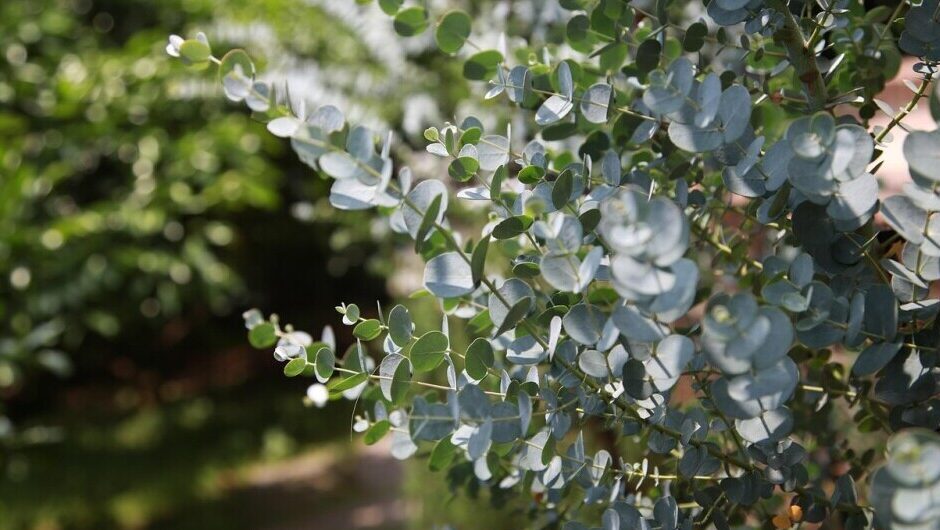Protecting Plants From Early Frosts
Learn how to protect plants from early frosts with simple, proven tips. From mulch and fleece covers to cold frames and microclimates – for a healthy garden.
Early frosts can show up when you least expect them, catching plants off guard and sending gardeners into full-on panic mode. I’ve been surprised a few times by chilly nights sneaking in at the start of autumn, and nothing’s more disheartening than waking up to blackened leaves and wilted flowers. Protecting plants from early frosts is all about preparation, quick action, and knowing a few simple tricks that can really make a difference for your garden’s survival.
Garden Nest Living grew from a simple idea: to share my love of gardens and creating calm, beautiful spaces, both inside and out. When you buy through my affiliate links, you are allowing me to keep sharing inspiration, ideas and products… at no extra cost to you. Thank you for being a part of my journey!

How Early Frosts Affect Plants
A sudden autumn frost can do quite a number on a garden, especially when tender plants are still putting on lots of new growth. I’ve seen the first light frost zap all those soft, green shoots practically overnight. The trouble is that younger leaves, flower buds, and stems haven’t had time to toughen up, so they’re easily damaged when temperatures drop.
Frost damage happens because water inside plant cells freezes, turning into tiny ice crystals that puncture cell walls. When things warm up, the water thaws, but the damage is already done. Leaves droop, turn black or mushy, and growth often stops for the season. It’s pretty dramatic looking, and the next morning, you’ll find your most tender plants looking pretty sad.
One thing I’ve learned is that “frost pockets”—those low-lying dips or hollows in the garden—stay colder than surrounding areas. Cold air, being heavier, sinks into these spots and doesn’t drain away, so any plants sitting down there are more likely to take a hit. Raised beds and planting on gentle slopes can help spare tender plants from the worst of it.
Tips for Preventing Frost Damage in the Garden
Getting ahead of early frosts is key to keeping your plants healthy. Checking local weather forecasts for frost warnings is always worth the effort. Layering different levels of protection, such as insulation, covers, and even moving plants indoors, can boost your plants’ chances overnight. Sometimes, we might stumble upon unexpected challenges, but with these precautions, your garden can weather those chilly nights just fine.
Keep the Soil Moist
I’ve picked up that moist soil holds onto daytime warmth better than dry soil does. Watering the ground (not the leaves) the day before a frost can help keep things just warm enough at the surface to give roots some extra protection. A couple of degrees difference can sometimes mean the difference between a wilted plant and a healthy one.
Insulate With Mulch
Mulching is another one of my go-to moves when frost threatens. Piling straw, bark, leaves, or compost around the base of your sensitive plants helps trap warmth in the soil and protect roots from sudden freezes. Mulch also helps prevent “frost heave” (when the soil literally pushes roots up and out of the ground due to freezing and thawing). Plus, mulch adds organic matter that gives a boost to your garden over time.
Create Microclimates
Not all spots in your garden freeze equally. South-facing walls, fences, or patios soak up more heat during the day and release it after the sun goes down, making these areas a lot less harsh at night. Nestling tender plants near these mini warm zones can keep them going longer into the fall. Sometimes, a wall or even a big rock can create a slightly warmer spot—every little bit helps!
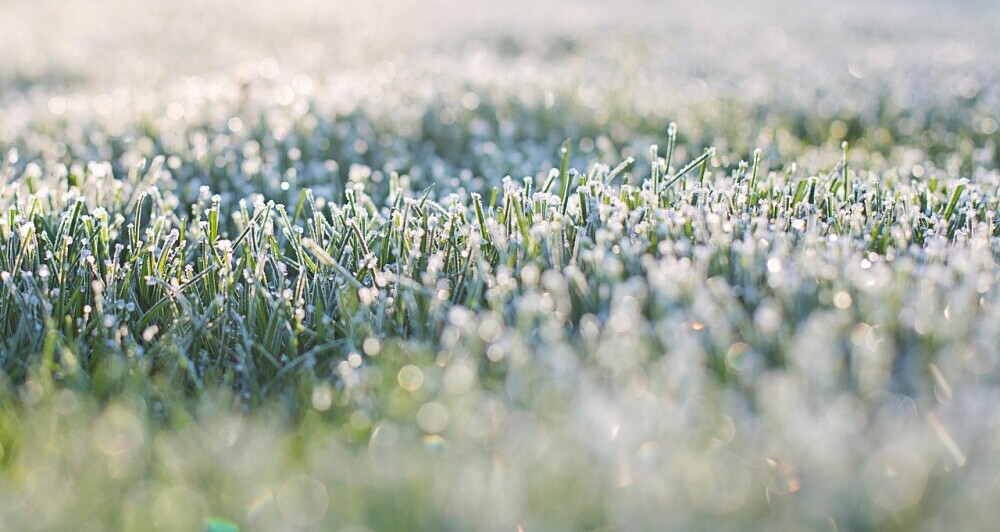
Gradual Hardening Off for Young Plants
If you’ve grown seedlings or kept young plants indoors, exposing them gradually to cooler outdoor temperatures helps them toughen up. This slow transition thickens up their cell walls and gives them a little more natural resistance when that first frost finally rolls in. Just remember, patience is key so your plants have time to get used to the change.
Beware Morning Sun
Surprisingly, one thing that can make frost damage worse is fast thawing, especially from early morning sunshine. Rapid warming causes cells already weakened by ice to burst. Using a bit of shade cloth or planting delicate varieties where they’ll be shielded from the morning sun can sometimes limit that extra damage. Pay attention to where the morning sun first strikes in your garden, as this makes a big difference.
Quick Ways to Protect Plants from Frost
Early frost alerts mean it’s time to move fast. Here are some options that have saved my plants more than once:
- Cold Frames: These are low, boxlike shelters, usually with a clear lid. Cold frames give young plants, cuttings, and autumn crops like spinach or lettuce a space to stay out of the wind and mostly frost-free. Just lift the lid for ventilation during the day to stop things from getting too warm or damp.
- Cloches: These individual covers shield winter crops like parsley, broad beans, or greens. You can use special plastic, glass domes, or even cut the bottom out of a clear plastic bottle. Great for keeping small plants cosy during cold snaps.
- Temporary Covers (Sheets, Fleece, Burlap): Draping breathable fabric covers over sensitive plants can make all the difference. Horticultural fleece is designed for this, but I’ve used old sheets and burlap sacks just as well. The trick is to make sure the cover touches the ground to trap heat rising from the soil, anchor the edges, and always take the cover off during the day so plants don’t get cooked or lack air.
- Bring Potted Plants Indoors: Move containers to a porch, greenhouse, or even your garage overnight. I’ve had good luck wrapping pots themselves in bubble wrap to keep rootballs snug, especially for fuchsias, pelargoniums, and citrus.
- Frost Tents: For larger garden plants, poke bamboo canes into the ground and drape fleece or frost cloth over the top, securing with string. It makes a simple tent that works for everything from dahlias to artichokes. For pots, bubble wrap the container and toss fleece over the top.
- Storing Tender Perennials: When you know frost is coming for good, dig up tender roots or tubers like dahlias, cannas, and begonias. Dry them off and store in a cool, frost-free spot—think basements or inside breathable paper bags.
- Palms and Bananas: Tie palm leaves together and, for extra cold, stuff straw gently into the middle crown of the plant. For bananas, set up a chicken wire tube around the main stem and pack with straw or leaves. In wet climates, topping the setup with a loose polythene sheet helps keep it dry, but avoid wrapping the stem itself with plastic.
How to Protect Potted Dahlias from Frost: A Lesson Learned the Hard Way
I have one client who grows all her dahlias in pots on her sunny patio. Throughout the summer, they’re absolutely stunning — bursting with colour and blooming continuously as we keep on deadheading.
That first year, after the last flowers faded, she cut all the plants back and left the pots outside for winter, assuming the dahlia tubers would stay safe tucked beneath the soil. Unfortunately, a harsh winter frost swept through, and by spring, nearly half of her beloved plants had turned to mush. The cold had crept through the pots and frozen the tubers solid.
The following autumn, I suggested a simple change — we moved every dahlia pot into the garage for the winter months, giving them just enough protection from frost and freezing temperatures. It worked beautifully. Come spring, the dahlias were healthy, strong, and ready to take pride of place back on the patio, blooming just as brilliantly as before.
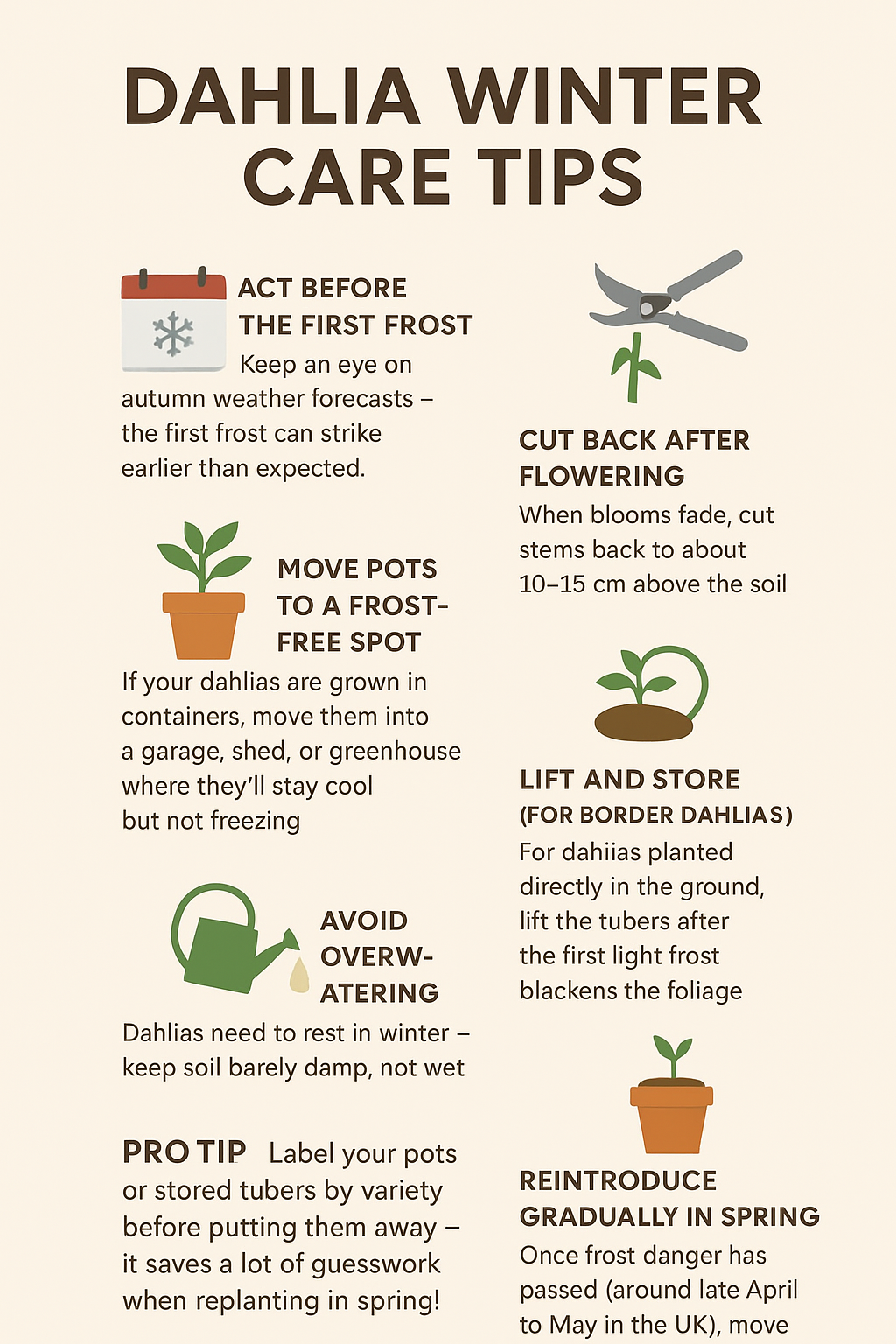
Best Materials for Frost Protection
It’s easy to think that any old cover will do, but some materials really work better than others. I avoid using plastic sheeting right on the plants, since it holds onto moisture and can freeze onto leaves, creating more of a problem. Frost fleece or old bed sheets are much safer; they let the plant breathe while offering insulation.
Burlap and breathable cloth let air flow through and hold in the warmth, which live plants always need. Bubble wrap is great for wrapping containers, but you want air, not a sauna, inside any tent or frame structure. If you have old towels or light blankets, those can work in a pinch as well, just make sure they don’t get waterlogged and heavy.
Common Challenges With Frost Protection
No matter how prepared I am, there are always a few tricky parts to frostproofing the garden. Weather can be unpredictable, covers sometimes blow off in a gusty wind, and sudden cold spells happen while I’m away for the weekend. Here are a few things I keep in mind to avoid common mishaps:
- Don’t forget to remove covers in the daytime or you risk cooking your plants instead of protecting them. This is one of the most common mistakes and can undo all your hard work from the previous night.
- Strong winds: Secure fabric covers and tents well with rocks, bricks, or stakes. Sometimes using clothespins or garden clips really helps keep things in place, especially on blustery nights.
- Damp soil: Avoid overwatering before a freeze, but keep the soil lightly moist for maximum heat retention.
- Missed frost warnings: Set up phone alerts from your favourite weather app to stay one step ahead. Also, getting in the habit of glancing at evening forecasts during autumn can save you a lot of stress.
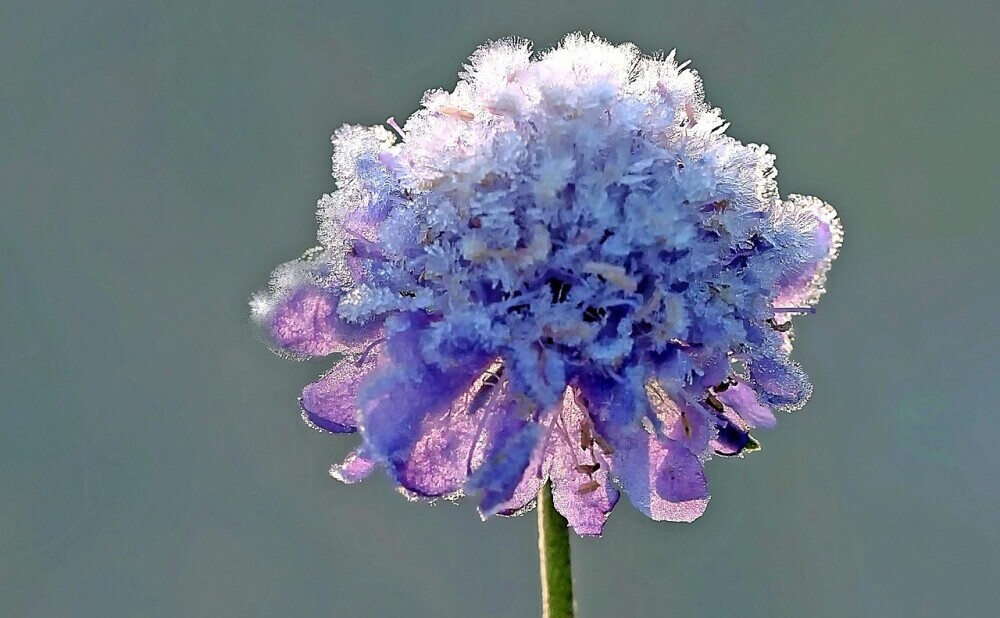
FAQ: Protecting Plants From Early Frosts
When should I start protecting my plants from frost?
As soon as local forecasts start mentioning temperatures dropping close to freezing, usually in late summer or early autumn, it’s worth getting your frost protection gear ready. If your garden has low spots or you grow plants known for being frost sensitive, I’d start a bit earlier. Keep in mind that first frosts often arrive before the “average” frost date in your area, not after it. It’s better to be a little over-prepared than to lose your best flowers or vegetables to an early cold snap.
Which plants are most at risk from early frost?
Tender annuals, tropical plants, and anything with fresh new growth are most at risk. That includes things like tomatoes, basil, nasturtiums, fuchsias, and soft herbs. Early flowering shrubs or perennials that are pushing out new buds in late summer are also vulnerable since their tissues haven’t had time to harden off yet. Even some vegetables like beans and squash don’t like a chill, so keep a close watch on those when frosty weather is forecast.
What are the best methods/materials to protect plants from frost?
I’ve had great results with horticultural fleece, old sheets, burlap, and cold frames. Covers or tents that use breathable fabrics work better than plastic, since moisture won’t get trapped. Cloches or even old glass jars over small seedlings work nicely too. For grounded plants, a thick layer of organic mulch keeps roots from freezing, and for potted plants, bubble wrap or moving them inside helps a ton. If you’re starting out, even some cardboard boxes tucked over small crops can help block those first icy winds.
How do I recover plants after frost damage?
If frost gets past you, wait until later in the day to see what perks back up; the shock alone can sometimes look worse than it is. For leaves and stems that have gone mushy or black, trim back just to living tissue and let the plant recover. Make sure soil is moist (not soggy) and give your plants some gentle fertiliser a week or so after the frost. Many established perennials will regrow as long as the roots weren’t killed. Don’t over-prune at first—sometimes, what looks lost will surprise you after a few warm days.
The Big Takeaway
Early and layered protection, using a combo of covers, insulation, and shelter, makes a real difference when those first frosts show up. I always remind myself it’s easier to take a few preventive steps than to try to nurse a damaged garden back to health after a cold snap. Being ready is super important if you want to keep your favourite plants thriving as the seasons change. Staying alert, having supplies on hand, and keeping an eye out for weather shifts can help you get a jump on protecting your garden before the first frost even hits. With a little planning, your plants can come through the chilly season looking strong and ready for another round of growth next year.
Author Bio: My Journey Into Gardening
I grew up surrounded by the rural beauty of the Hampshire countryside, where my earliest dream was to work with animals. After finishing school, I studied at Sparsholt College and earned a National Diploma in Animal Management.
Life, as it often does, took me in a different direction. I built and ran another business, got married, and became a proud mum to three wonderful boys. After the birth of my youngest in 2020, I found myself at a crossroads, ready for a new career. Gardening—something that had always been a passion—was the natural choice.
I’ve now been working as a self-employed gardener in Hampshire for over five years, but my love for gardening began long before that. Growing up, I spent countless hours outside helping my parents, both keen gardeners (with three allotments!). Being outdoors, nurturing plants, and watching gardens transform with the seasons has always brought me joy.
While much of my knowledge has come through hands-on gardening experience, trial and error, and plenty of research, I’ve also relied heavily on trusted resources like the Royal Horticultural Society, which has guided me in becoming a confident, self-taught gardener.
I created Garden Nest Living to share everything I’ve learned and to help others discover the same satisfaction in creating and enjoying beautiful outdoor spaces. Whether you’re looking for UK gardening advice, self-taught gardening tips, or inspiration for your own garden, my goal is to inspire and guide you on your gardening journey.
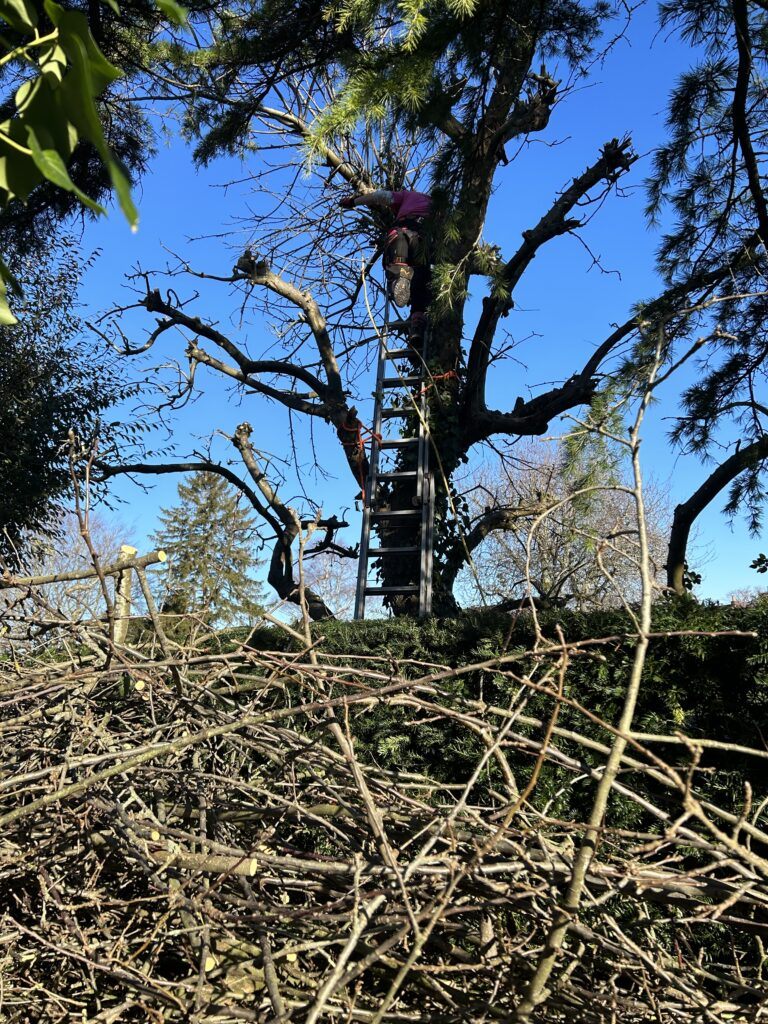
Pruning an apple tree in a client’s garden before the frost arrives.
